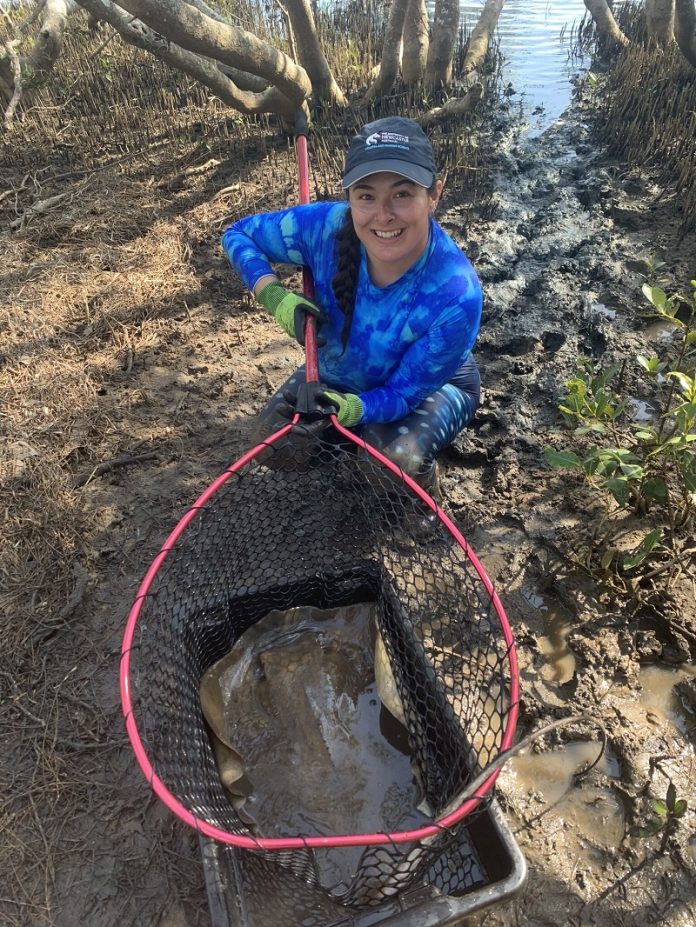
A new study has uncovered the significant impact stingrays have on estuaries, revealing that these threatened creatures in Brisbane Water, New South Wales, move more than 21,000 tonnes of sand each year.
This is equivalent to the weight of the Great Sphinx of Giza in Egypt.
University of Newcastle Ph.D. student Molly Grew, who led the study, explained that stingrays create shallow divots in the ocean floor when they feed and sleep.
These pits help oxygen penetrate the sand, which many marine organisms rely on for survival.
Stingrays forage for food by creating pits on the ocean floor and burying themselves in the sand to hide from predators.
Molly’s research aimed to understand how much sand stingrays move and how this affects the estuary ecosystem.
Estuary Stingrays in Brisbane Water are near threatened, with their population declining. Molly emphasized that fewer stingrays would mean less sand turnover, leading to more anoxic (oxygen-lacking) sand.
This could negatively impact the survival of various marine creatures and affect recreational and commercial fishing.
Published in the journal Remote Sensing in Ecology and Conservation, this study is the first to combine drones, aerial imagery, and 3D modeling to map and identify stingray feeding pits on the estuary floor.
Molly conducted daily drone surveys at sunrise over a week to track how quickly new pits appeared.
Using drone photographs and specialized software, Molly created 3D models of the sand surface to measure the volume displaced. She then extrapolated this pattern across the estuary. Until now, counting stingray pits was labor-intensive and time-consuming. This is the first time drone imagery has been used to measure stingray pits in 3D.
Molly’s Ph.D. supervisor, ecologist Dr. Vincent Raoult, highlighted the importance of this study. “Research like this is vital to show the significant role stingrays play in shaping estuary ecosystems and to raise awareness about their conservation,” he said.
Alongside Dr. Raoult, Dr. Andrea Griffin and Associate Professor Troy Gaston from the University of Newcastle’s School of Environmental and Life Sciences supervised the research, with contributions from Dr. Stephanie Duce, a spatial science Senior Lecturer at James Cook University.
Estuary Stingrays, which are unique to Australia, are threatened by habitat degradation, urban development, toxic runoff, and dredging. “They live in estuary environments near human populations, which puts them at risk,” Dr. Raoult said.
The study revealed that stingrays likely displace about 60 tons of sand per day in Brisbane Waters. This finding highlights how much these animals shape the estuaries we live near. “We need to cherish and value these animals and their estuary home,” Dr. Raoult concluded.
This research underscores the importance of stingrays in maintaining healthy estuary ecosystems and calls for greater efforts to protect these vital creatures and their habitats.



